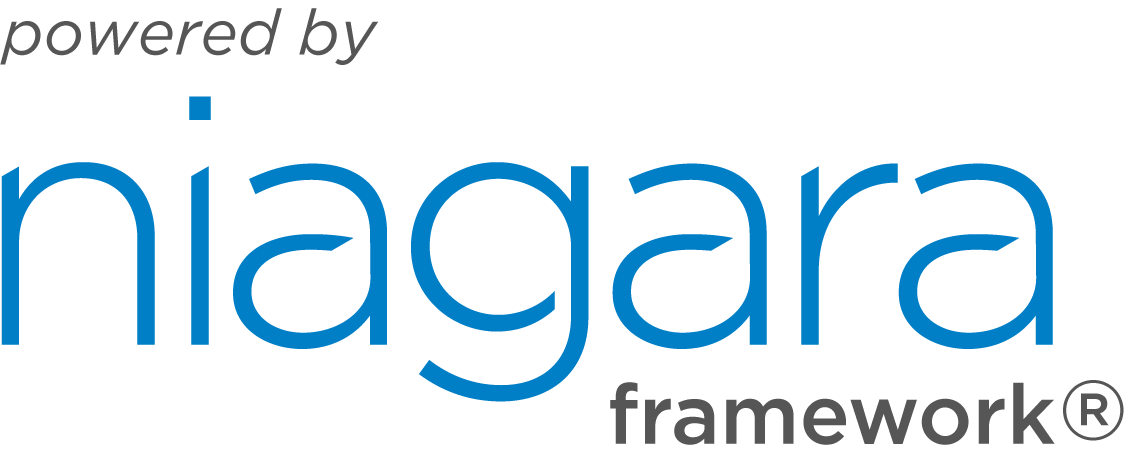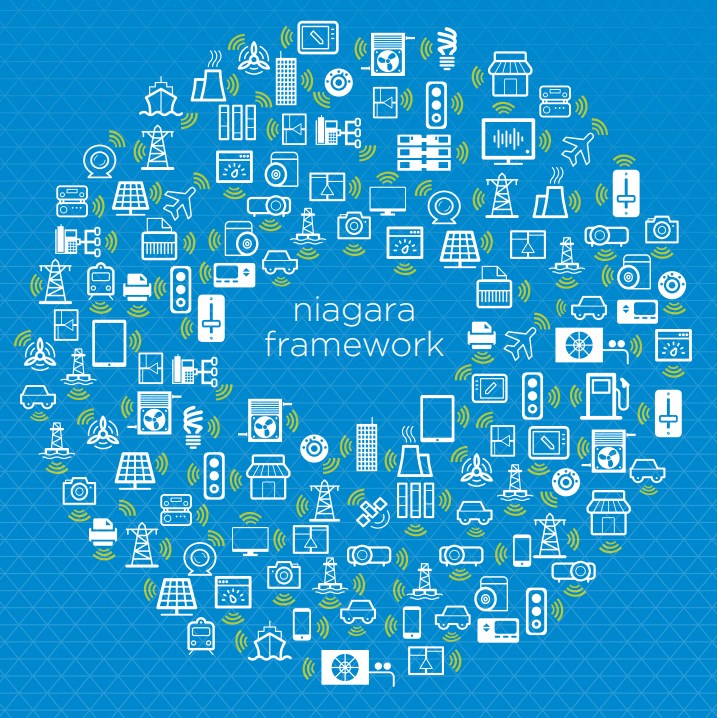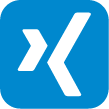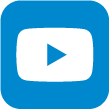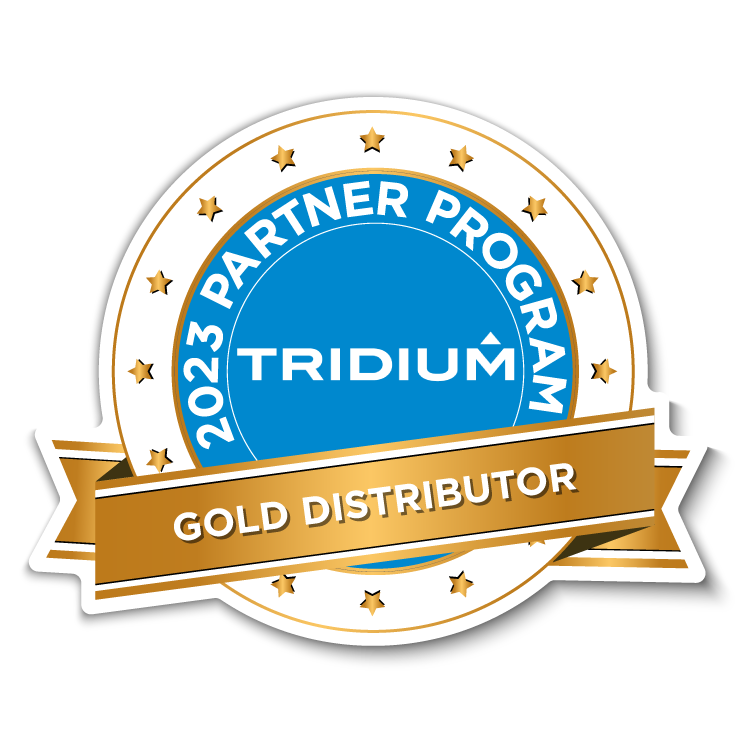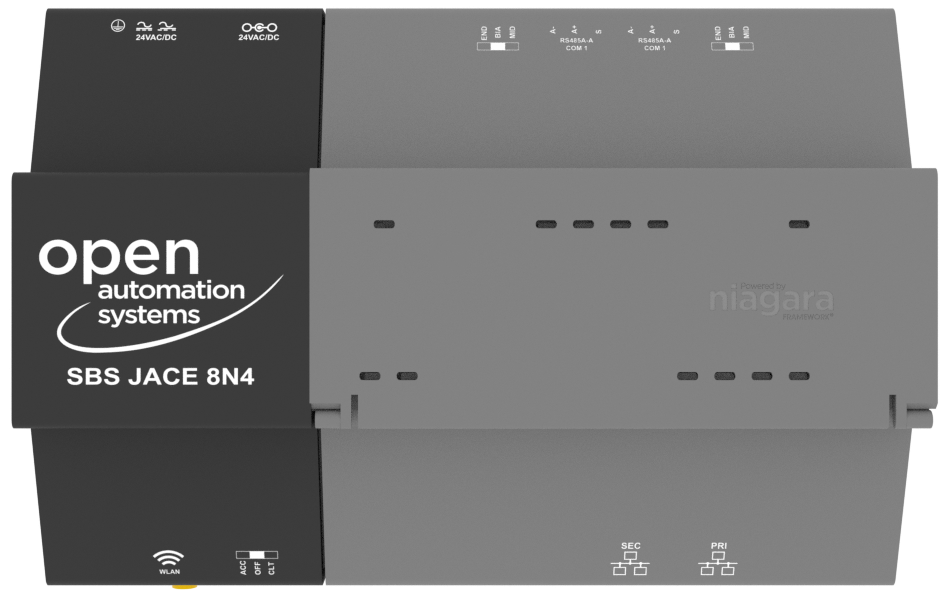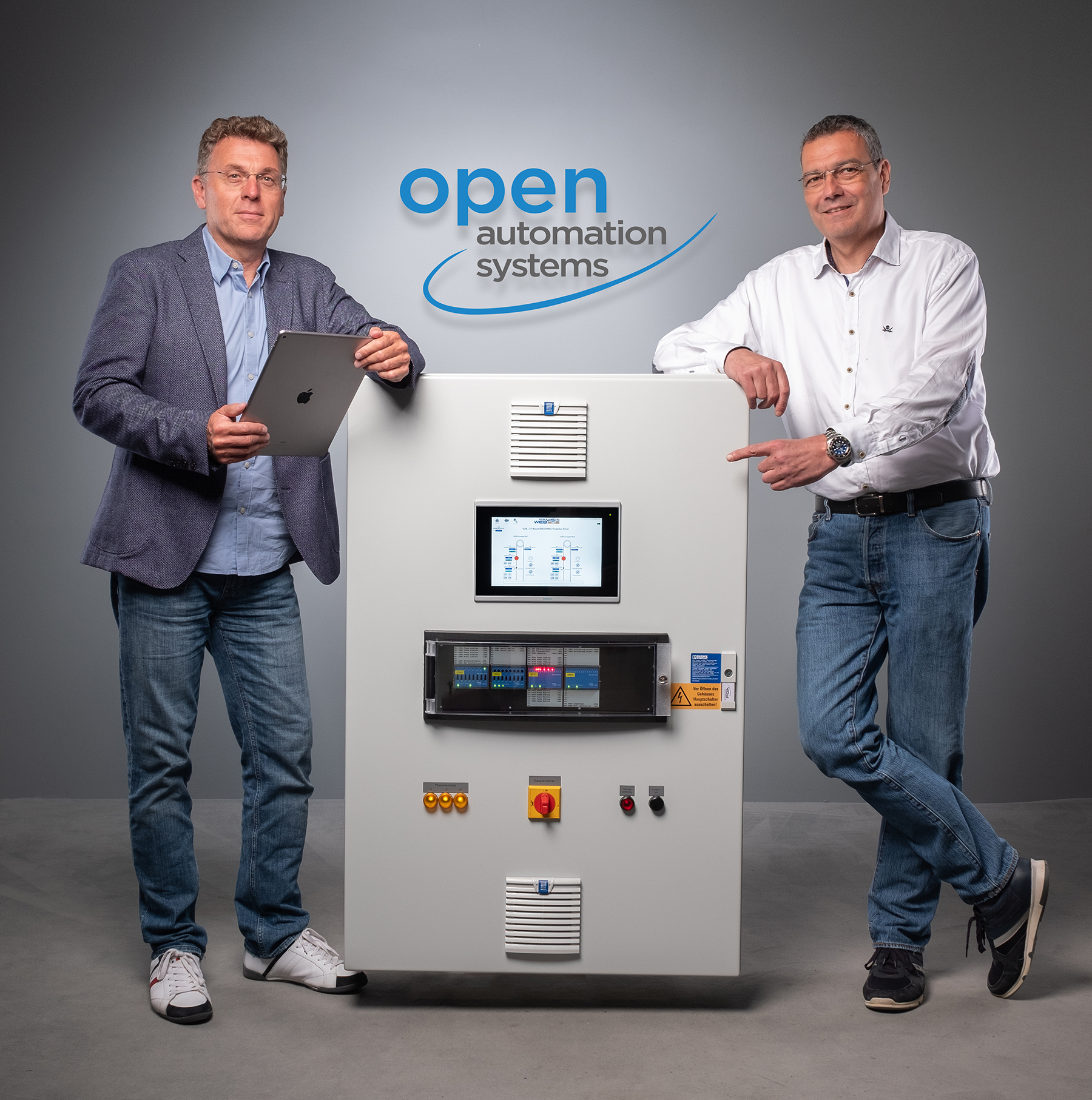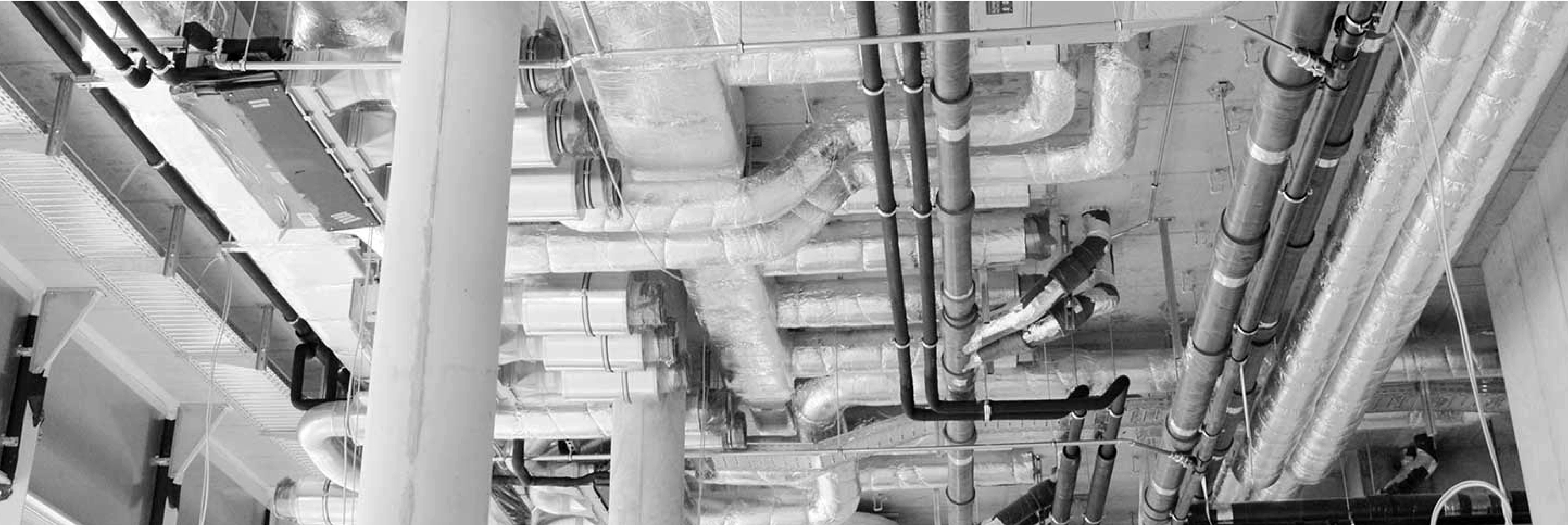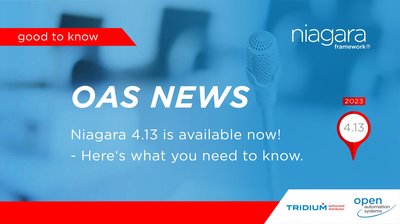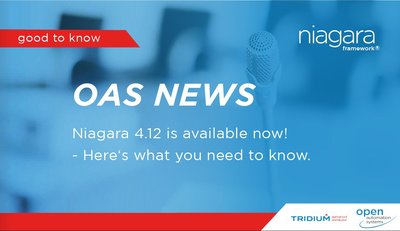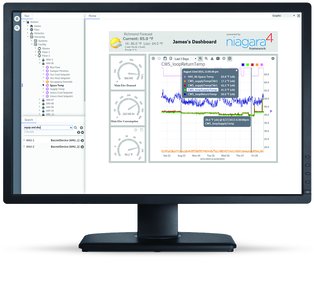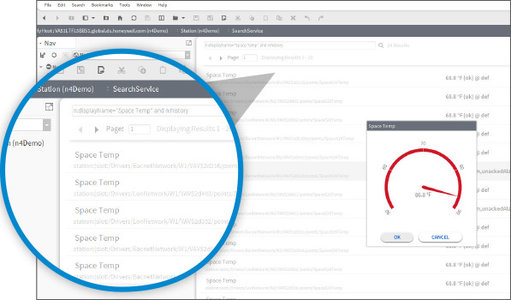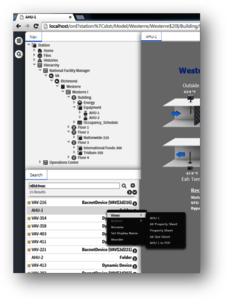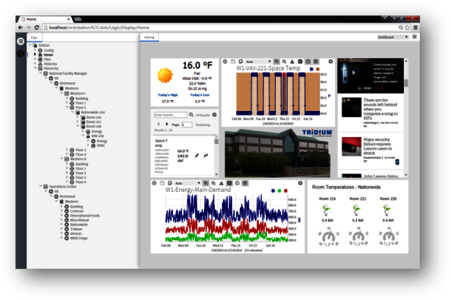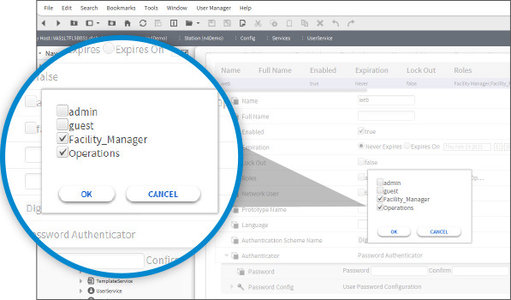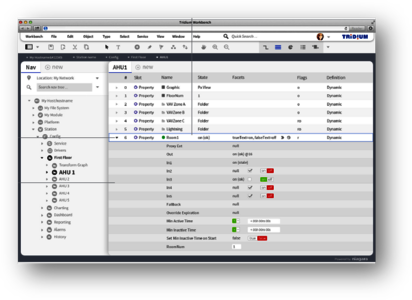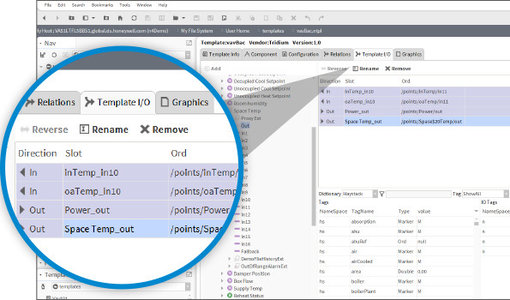Niagara 4 - open 4 innovation
Niagara 4 builds on the legacy of the Niagara Framework® in new and exciting ways. It’s lessreliant on browser plug-ins, faster and easier to use. End users can now directly access, analyze and act on a wide range of operational data as a result of several innovative changes.
AN ALL-NEW USER INTERFACE: Niagara 4 features a bold and intuitive new interface. Modern and easy to use, the platform utilizes HTML5 to provide an array of rich features.
MOVING NIAGARA TO THE EDGE: Niagara 4 is available on the Niagara Edge 10 controller and has been ported to a variety of partner-branded IP-based controllers. As a result, users have choice and great advantages in a single-tool infrastructure from edge to cloud, saving training costs and speeding learning curves.
EASIER INTEGRATION: Niagara 4’s new templating feature enables tags to be applied to devices quickly, and allows applications to be prebuilt against a set of standardized templates which then can be quickly created and reused. In other words, once a template is made, it can be redeployed as often as needed in other instances.
FASTER, MORE POWERFUL DEVELOPMENT: Developers will fi nd improved documentation, a rich open API library, BajaScript 2.0, semantic data modeling via tags and other ready-made tools to greatly speed and support development. Anyone familiar with open Web development can now create a custom UI in Niagara.
MORE DATA AT YOUR FINGERTIPS: With a simple point-and-click or drag-anddrop, users can instantly fi nd and display critical information from their desktop, tablet or mobile device.
OAS NEWS - Niagara Updates
Niagara 4.13 is available!
Niagara 4.13 is available!
The following new features and functionalities are available for testing in Niagara 4.13:
Niagara 4.13 Features Overview
Niagara 4.13 Features
Multi-Tiered SystemDb: Create Niagara Network architectures of any layout to adopt complete framework solutions.
HTML5 Niagara Network Station Manager View: Offers improved user experience with drag-n-drop function in HTML view. Access the Station Manager view from a browser running on the local (or remote with VPN) network for added flexibility.
Certificate Manager Enhancements and HTML5 View: Provide access to Niagara’s Certificate Management for the IT network admin persona through just a browser eliminating the need for Workbench.
Subscription Licensing: Subscription-based products can be purchased using OpEx instead of CapEx for purchasing flexibility.
Containerized Niagara: Containerized Niagara offers simplified deployment of Niagara in cloud-based environments and for third-party hardware.
Haystack 4 Support: Haystack 4 represents the latest update to the Haystack Tag Dictionary.
Modern Authentication Support for Email Service: Email authentication support includes the following new features: Maintain good security posture using preferred authentication by major email providers.
Edge Tools Updates: Reduces time spent installing, commissioning, and configuring multiple Niagara devices.
Template Improvements: Reduces time spent installing, commissioning, and configuring multiple Niagara devices with templates.
Unattended Installation: Run a Niagara installer for Windows or Linux without the need for user input.
SysLog Integration: Collect all Niagara logs in a centralized location and meet security requirements for integrating standard IT tools for analyzing log files.
Updated OS and Enterprise Applications: In Niagara 4.13, support has been added for several new operating systems and enterprise applications.
Video Driver Framework: Integrate live streams from industry standard cameras into the Niagara Framework to provide in HTML5 browser viewing.
Enterprise Security: Optimized workflow for Join and Replication processes, and enhanced the logs and debug in the process to provide clear feedback to the user on associated errors and workflow statuses.
Niagara Analytics: Visualize energy usage performance with an established baseline displayed on an Analytics Web Chart to derive energy savings opportunities.
Niagara 4.12 is available!
Niagara 4.12 is available!
Niagara 4.12 is now available! This update to the software is designed to drive customer success in smart building and IoT deployments. It also offers exciting new features that further extend Niagara's key features such as visualization, rapid deployment, security, edge, connectivity, certification and IT compliance.
Niagara 4.12 Features Overview
NIAGARA 4.12 FEATURES
WebWiresheet 2.0: WebWiresheet is a native HTML5 configuration tool that extends the power of the Workbench Wiresheet application into a browser environment. New: Intuitive linking, multiple selection mode, quick relation highlighting, and search service integration.
HTML5 Niagara Network Point Manager: Extends the functionality of the Workbench Niagara Point Manager application into a browser environment. New: Locate and add components via an enhanced HTML5 browser interface, drag-n-drop functionality, improved usability, increase workflow efficiency, added flexibility.
HTML5 BQL Builder: Provides an enhanced query workflow and user experience that gives you even more flexibility to get your work done quickly. New: Query components through an HTML5 browser interface, configure reports in a browser using the reporting service, and create BQL queries for later use in your Niagara stations.
Transform Pane: PX Transform Pane -Mirror, Flip & Rotate
Expanded History Character Limitation: In previous versions of the Niagara framework, the character limit for history names was 44 characters. In Niagara 4.12, this limit has been expanded to 200 characters. New: Get back the flexibility you deserve: Conformance to any point naming convention, Eliminates the need for cryptic point naming, and allows you to quickly find Niagara histories.
Internationalization Support: New Release Artifact that provides a delta of the lexicons added, edited or removed in the new release in a user-friendly format. New: Targets non-English speaking segments and allows you to quickly incorporate release lexicon changes into your applications.
MQTT Azure Authenticator: Reduce the time and complexity of integrating Niagara with cloud solutions with updated connectivity options. New: Updates to the Niagara MQTT driver to support Azure authentication and use of the JSON toolkit to create cloud messages.
HTTP Client Driver: The HTTP Client module provides tools and a driver that interact with HTTP services, such as web services and Restful API endpoints. New: Enables data exchange inside and outside a station and the execution of a GET, POST, or PUT between Niagara and APIs or web services.
MSTP Engine Optimization: Prior to version 4.12, MSTP communication on a JACE was handled by the primary processor. In Niagara 4.12, MSTP processing has been reengineered to leverage the integrated coprocessor for robust and efficient communication.
Niagara Features Timeline
See what enterprise features have been added since Niagara 4.0
Niagara 4 Features Timeline
Niagara 4 Features Timeline
Below is a list of features that have been released since the introduction of Niagara 4. Some features in the list have been included to ensure parity with Niagara AX, while others have extended the functionality of the core framework.
Niagara 4.10 Features
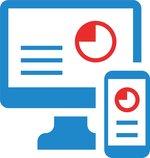
Visualization & Analytics
The custom user interface you design to serve relevant data to end-users has a huge impact on project success. To support efficient UI development, Niagara not only offers the visualization improvements of the HTML5 standard, it also supports tag-based graphics. Niagara Analytics package is native to Niagara Supervisor, offering data source, functional and mathematical programming blocks that enable sophisticated analytic algorithms. To learn more about tagging in action and to review Niagara Analytics features and use cases click through here.
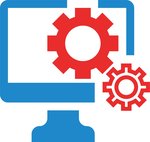
Easy Provisioning
Your productivity is important to us. We want Niagara users to sail through essential software configuration and maintenance tasks like managing station and platform users, security settings, and disaster recovery back-ups. Niagara Supervisor's System Database minimizes the time needed to bring remote Niagara instances under supervisory control. From the Niagara Supervisor, you can do efficient batch provisioning to install upgrades to JACE and Edge firmware. to enter security credentials, and to set-up applications and commissioning options. You can also save steps by taking advantage of built-in software templates and templating features.
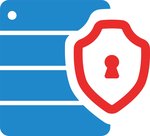
Cyber Defense
Tridium proactively safeguards data acquired, stored and served by Niagara Framework. We make security settings configurable, so that all Niagara instances can be customized to adhere to organizational security policies related to user account management, public key infrastructure (PKI) and Lightweight Directory Access Protocol (LDAP) integration, password expiration policies and more. We make cyber security visible through the Niagara Security Dashboard, a centralized, easy-to-read and actionable view on the security posture of your entire Niagara infrastructure. Niagara now also enforces third-party module signing, automatically eliminating the risk that modules may have been tampered with or come from an untrustworthy source.
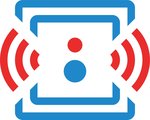
Intelligent Edge
The trend today is for supervisory controllers, like the Niagara Supervisor, to distribute more control and management tasks to intelligent edge devices. You can better optimize the performance of specific equipment and subsystems when you can collect and analyze operational data at finer granularity, in greater volumes and across longer periods with edge devices. Today, Niagara Supervisor works seamlessly with the Niagara Edge 10, which is delivered with embedded Niagara Framework software/firmware along with the powerful ACE deterministic engine. Our goal is to bring the power of the Niagara Framework to even more edge devices. Today there is a host of third-party vendors offering controllers 'Powered by Niagara.'
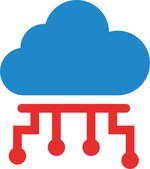
Connectivity & Cloud
Enterprise leaders and building owner/operators are waking up to how valuable their operational data is when it comes to achieving outcomes like greater comfort, productivity and energy savings. To make the most of it, they need to integrate Building Automation System (BAS) data and other sensor-acquired environmental data with their enterprise systems and applications. With its large collection of Tridium-developed and third-party-developed drivers, Niagara Framework is one of the surest routes to achieving data interoperability with other applications and databases.+Es gibt Niagara-Treiber und APIs zur Integration mit den gängigsten Paketen zur Verwaltung von Arbeitsaufträgen und zur Analyse von Betriebsdaten.
Niagara MQTT driver now supports easy integration with public clouds such as AWS (Amazon Web Services) and Google cloud. And, Tridium's JSON Toolkit makes it easy to construct bespoke messages into required formats for cloud communication.
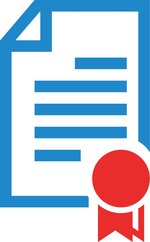
Certification & Compliance
Tridium works with the building automation industry standards body BACnet® to test and certify Niagara configurations. For example, Niagara 4 releases of Niagara Framework and underlying JACE hardware are BACnet Advanced Workstation (B-AWS) and BACnet Building Controller (B-BC) compliant.
Niagara Supervisor, JACE units and Niagara Edge 10 controllers are eligible for accreditation under the Federal Risk Management Framework (RMF) for US government and military deployments.
Among its cyber security certifications, Niagara Framework has achieved FIPS 140-2 Level 1 conformance - an essential certification for mission-critical and highly regulated contexts like banking/finance and government/military work. IT administrators are also demanding that devices that connect into their enterprise networks be 802.1X network compliant. JACE® 8000 and Niagara Edge 10 are now compliant with that IEEE standard for network authentication.
Niagara 4 Key Features
- Modern UX framework and design language (HTML5)
- End users are able to easily customize dashboards
- Advanced charting and visualization
- Data tagging
- Tag-based navigation
- Device templating • Data cleansing capabilities
- Niagara station search
- Workbench workflow improvements
- Role-Based Access Control (RBAC)
- Pluggable authentication schemes
- Improved UI developer experience (BajaScript 2.0)
- Station templating
- Niagara AX to Niagara 4 station migration tool
For more information and broschure click here.
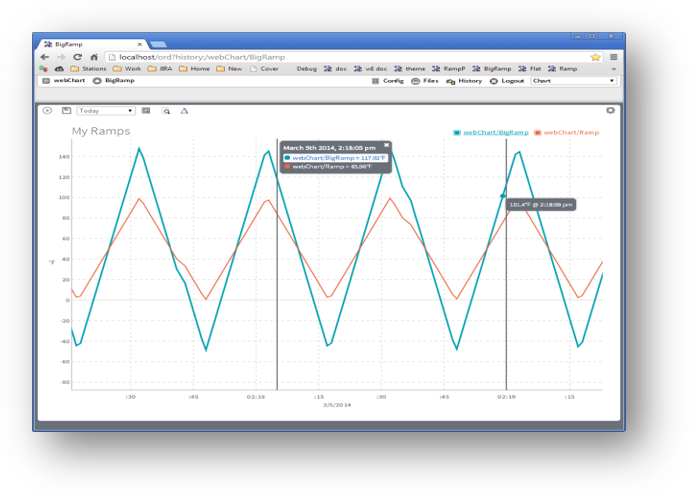
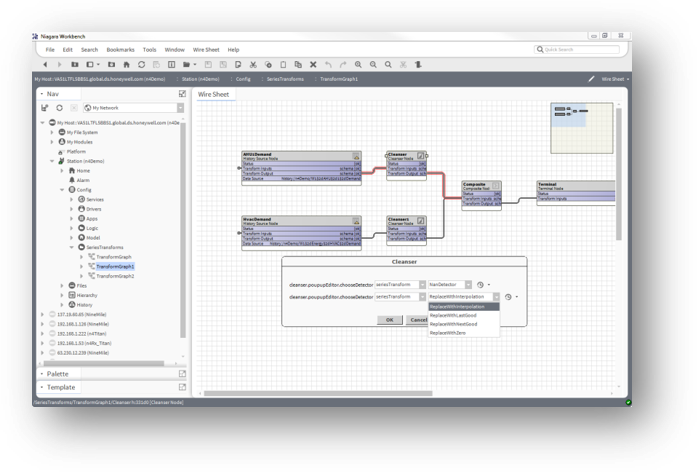
An all-new user interface
An all-new user interface
Niagara 4 features a bold and intuitive new interface. Modern and easy to use, the platform utilizes HTML5 to provide an array of rich features. Our powerful new UI framework makes the user experience simpler and more robust, giving users maximum control of their data and decisions. The optimized workflow allows users to find and visualize data points quickly based on a powerful tagging system. New features include a built-in search function, customizable charting and visualization, role-based security, real-time troubleshooting and rapid navigation. Niagara 4’s use of HTML5 provides a user interface that makes it easier for systems integrators to create and maintain customized views for end users.
More data at your fingertips
Tagging and Search
Tagging and Search
This one-tool solution utilizes tag hierarchies to automatically integrate all data in a navigation tree. Using a standardized dictionary of tagged elements, users choose which points to monitor directly. Users can utilize the standardized dictionary to drive consistency in their building automation systems.
Visualize and Dashboards
Visualize and Dashboards
With a simple point-and-click or drag-and-drop, users can create customized charts, allowing them to instantly find and display critical information from their desktop, tablet or mobile device. Systems integrators no longer necessarily need to re-engineer new dashboards each time a customer requirement changes. Building real-time dashboards is straightforward, allows for immediate troubleshooting and quickly displays data with attractive visualizations.
Powerful Security
Powerful Security
Niagara 4 takes a “defense-in-depth” approach to Internet of Things security. Building on the security of previous Niagara versions, Niagara 4 is secure by default. Authentication requires users to choose strong credentials, and both data in motion and sensitive data at rest are encrypted. Niagara 4 also uses Role-Based Access Control (RBAC), making user permissions easy to configure and less error-prone. Niagara 4 also can be integrated with existing enterprise identity and access management systems, such as LDAP and Kerberos. All user actions and security-related events are recorded in Niagara’s audit log for traceability.
Easier Integration
Easier Integration
Niagara 4’s new templating feature enables tags to be applied to devices quickly, and allows applications to be prebuilt against a set of standardized templates which then can be quickly created and reused. In other words, once a template is made, it can be redeployed as often as needed in other instances. The result is not only a more functional design for users but also reduced integration time across the board.
Faster, More powerful development
Faster, More powerful development
Developers will find improved documentation, a rich open API library, BajaScript 2.0, semantic data modeling via tags and other ready-made tools to greatly speed and support development. In addition, the need for specialized training in the Niagara user interface is reduced—anyone familiar with open Web development can now create a custom UI in Niagara. Niagara 4’s new features and public APIs make it easier to extend, develop and build upon the framework.
Seamless conversion
Seamless conversion
Tridium has engineered Niagara 4 and the new SBS JACE 8N4 controller to be easy to add to, or upgrade from, your current Niagara-based systems.
Our native Niagara Fox protocol will work between the Niagara AX and Niagara 4 software systems, and the Niagara 4 software will work with any currently available JACE hardware. For those making the conversion to our most up-to-date products, Tridium offers a station conversion tool that will adapt Niagara AX stations to Niagara 4 stations. Converted stations will require third-party vendors to provide updated modules for Niagara 4 versions of their content. However, most modules will require only minor refactoring for developers to make the conversion. We are dedicated to making the conversion between systems as seamless as possible.
Niagara AX compatibility summary
Niagara AX compatibility summary
- Fox network compatibility between Niagara AX and Niagara 4
- Station conversion tool to convert Niagara AX stations to Niagara 4 stations (.bog files)
- Public APIs • Niagara Driver Framework still supported
- Niagara 4 will run on any SBS JACE 8N4 with HotSpot VM (J3, J6, J6E, J7)
- Niagara 4 will run on any SBS JACE 8N4 controller
Niagara Framework
Software frameworks provide a platform to allow businesses to more easily build their end-product offerings. The patented Niagara Framework is targeted at solving the challenges associated with managing diverse smart devices, unifying their data, and connecting them to enterprise applications. Examples of smart devices include: monitoring and control systems, sensors, metering systems, and embedded controls on packaged equipment systems.
framework, n. something composed of parts fitted together and united; a structural frame; a basic structure (as of ideas); in object-oriented programming, a reusable basic design structure, consisting of abstract and concrete classes, that assists in building applications.
